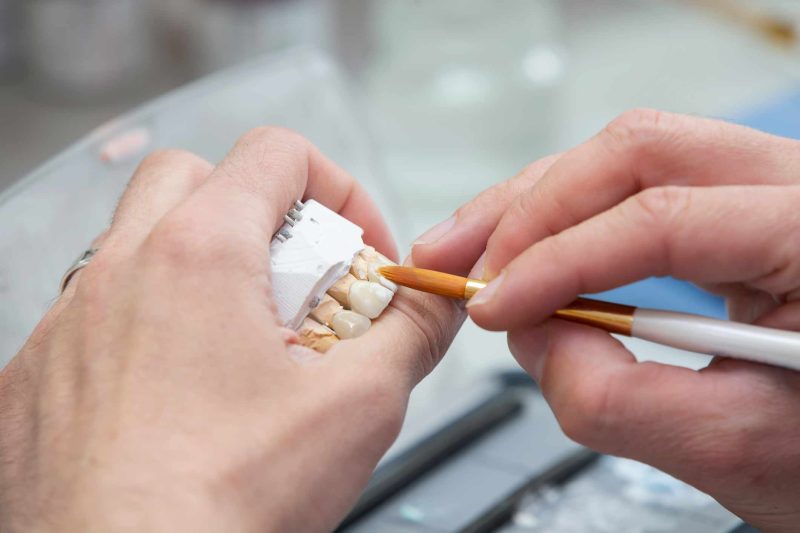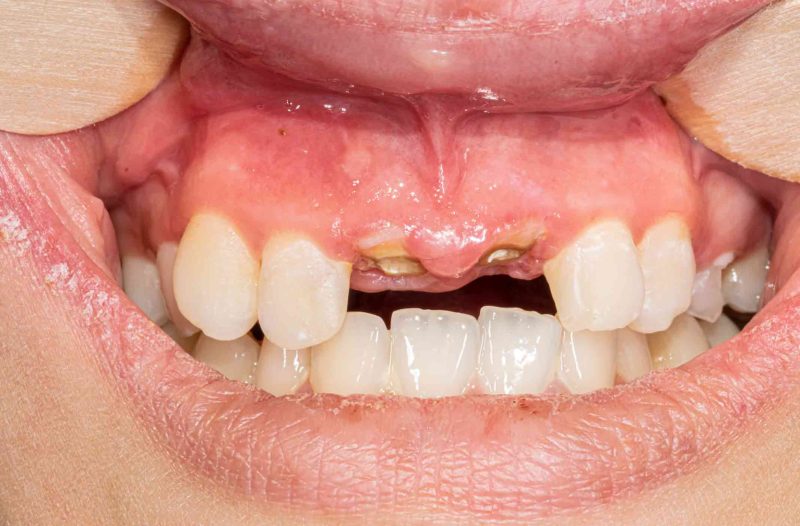Dental Bonding in Santa Clarita and Valencia, CA
Schedule a Free Consultation for Dental Bonding
Schedule Your Appointment Today Call Now: (661)290-2825From cracks to discoloration, teeth are prone to all types of wear and tear. Dental bonding helps rebuild cracked or misshapen teeth using a tooth-colored composite resin.
With the help of dental bonding, you can renew the appearance of worn teeth, restoring them to their natural shape and enhancing their alignment. Luckily, dental bonding is a common, minimally invasive option available to you right here in Santa Clarita.

Meet Dr. Soleimani, aka Dr. Pete, a dedicated dentist and father serving Southern California since 2006.
Patients choose Dr. Pete because his care is personalized, pain-free, and his cosmetic and implant dentistry expertise. When he’s not in the office Dr. Pete enjoys all things outdoors, from skiing and hiking to fishing.
Set up a consultation today to learn how Dr. Pete makes every dental visit a positive experience
Check out our Instagram profile to see more of our dental bonding before & after pictures and videos.
Our Process: How Dental Bonding Works

Looking for quick and effective cosmetic dentistry and dental restoration? Dental bonding may be the answer. Here’s everything to know about our dental bonding process
Before the Procedure
- Consultation and Evaluation: During your initial visit, we use advanced imaging techniques, such as digital X-rays and intraoral cameras, to assess various dental concerns. These might include teeth stained by coffee or wine that resist traditional whitening methods, minor misalignments that do not require orthodontic intervention or teeth that have worn down edges from habits like nail-biting or pen-chewing. Based on our findings, we design a dental bonding strategy that addresses your specific issues, such as improving tooth color or correcting shapes and gaps.
- Personalized Care: Understanding your dental history is crucial. For example, if you have a history of sensitivity to dental materials, we may perform patch tests to ensure the bonding materials are suitable for you. We discuss options for making the procedure as comfortable as possible, whether that’s using a numbing gel for those with mild anxiety or discussing sedation methods for more anxious patients.
- Preparation Instructions: Before your dental bonding appointment, we will provide detailed preparation instructions. We might suggest using a special desensitizing toothpaste if you have sensitive teeth or advise eating a good meal beforehand, as you might not want to eat immediately after the procedure due to numbness from any local anesthesia. We’ll remind you to maintain good oral hygiene leading up to the appointment and avoid anything overly abrasive that could irritate your gums right before treatment.
During the Procedure
- Applying the Composite Resin: The dental bonding procedure is straightforward and minimally invasive. We start by applying a tooth-colored composite resin to the areas in need of correction. This versatile material allows us to address a variety of dental issues, from improving the color of discolored teeth to reshaping teeth or closing small gaps.
- Shaping and Hardening: With meticulous care, we sculpt the resin to achieve the desired shape and appearance, ensuring it blends seamlessly with your natural teeth. The hardening process is quick, using a curing ultraviolet light that solidifies the resin in seconds, immediately bonding it securely to your tooth.
- Finishing Touches: The final step involves polishing the bonded teeth to match the sheen of your natural teeth, creating a uniform and aesthetically pleasing smile that feels as good as it looks.
After the Procedure
- Immediate Results: One of the joys of dental bonding is seeing the instant improvement in your smile. Whether it’s brighter teeth free of stains or a beautifully even row of teeth where there were once gaps, you’ll see the results immediately.
- Care and Maintenance: We’ll give you specific advice on caring for your bonded teeth, such as recommending a non-abrasive toothpaste to maintain the polish and avoid wearing down the resin. We advise against biting directly into very hard foods like candy apples, which could chip the bonding. Drinking staining liquids like coffee, tea, or red wine through a straw can help avoid discoloration of the resin. We may also recommend over-the-counter pain relievers from a drugstore.
- Follow-up Care: Regular check-ups are vital to ensure the longevity of your dental bonding. During these visits, we can quickly polish the bonding to refresh its appearance or make minor adjustments if needed. We’re committed to keeping your smile not only beautiful but healthy and functional.
In Santa Clarita, California, our expert dental team is dedicated to providing dental bonding solutions that enhance the function and health of your teeth and transform your smile with natural-looking and lasting results. Whether you’re looking to correct the color on the surface of the tooth, fill in tooth chips, or reconstruct the entire tooth, we’re here to help you achieve the confident smile you deserve.
Potential Side Effects and Recovery Tips for Dental Bonding
- Sensitivity and Discomfort: It’s common to experience temporary sensitivity to hot and cold or mild discomfort after the procedure, especially on the front of the tooth. Manage this with over-the-counter pain relief and by avoiding extreme-temperature foods and drinks. Stick to soft foods and use a toothpaste designed for sensitive teeth if needed.
- Care of Bonded Teeth: To prevent wear, chipping, or staining of the composite resin, avoid biting on tough objects such as hard candy, pretzels, or hard fruits, minimize exposure to staining substances like coffee, tea, and tobacco, and maintain good oral hygiene practices. Brush with a soft-bristled toothbrush and non-abrasive toothpaste, and floss gently around the bonded part of the tooth. Avoid teeth grinding by wearing a mouthguard to bed.
- Gum Irritation and Bite Adjustment: Some might experience gum irritation or need time to adjust to the feel of the bonding. Rinse with salt water to ease gum irritation, and contact your dentist’s office if the bite feels uneven or if there are any sharp edges.
- Maintenance and Follow-Up: Bonded teeth can last several years with proper care but may eventually require tooth repair or replacement. Regular dental check-ups are crucial for monitoring the condition of bonded teeth and making any necessary adjustments.
Benefits of Dental Bonding
Cosmetic Enhancement
Dental bonding can significantly improve the appearance of your teeth by correcting discoloration, reshaping teeth, closing gaps, and repairing chips or cracks in broken teeth. This leads to a more uniform and attractive smile, boosting your confidence and self-esteem.
Pain and Discomfort Reduction
For teeth that are sensitive due to minor decay or enamel erosion, dental bonding can provide relief by covering exposed dentin, reducing sensitivity and discomfort.
Improvement in Oral Function
Dental bonding can improve the function of teeth that are misshapen or have minor bite issues, resulting in better chewing and speaking.
Minimal Tooth Removal
Unlike more invasive procedures, dental bonding requires minimal removal of tooth enamel, preserving more of your natural tooth structure.
Quick and Efficient Procedure
Dental bonding is a fast process, often completed in one visit, making it a convenient option for improving your smile without significant downtime.
Affordability
Compared to other cosmetic dental procedures like dental veneers or crowns, dental bonding is a cost-effective way to make cosmetic improvements to your teeth.
Long-Term Oral Health Benefits
By addressing and correcting minor dental issues, dental bonding contributes to the long-term health and integrity of your teeth and gums, preventing potential future problems due to tooth decay.
Dental Emergency: Extreme Pain in Broken or Chipped Tooth
Are you experiencing unbearable pain due to a broken or split tooth? For severe cases, surgical options may be explored. If possible, cover any jagged edges with dental wax and seek emergency care.
Don’t wait – find out immediately if you require emergency dental services for your tooth pain.Are you experiencing unbearable pain due to a broken or split tooth? For severe cases, surgical options may be explored. If possible, cover any jagged edges with dental wax and seek emergency care. Don’t wait – find out immediately if you require emergency dental services for your tooth pain.
Read Article
FAQs About Dental Bonding
What Is Dental Bonding?
Dental bonding is a cosmetic procedure where a tooth-colored composite resin material is applied to teeth to repair imperfections such as chips, cracks, and discoloration or to close gaps between teeth. Much like a dental filling, it’s sculpted to the right shape, hardened with a special UV light, and polished to match the surrounding teeth.
How Long Does The Dental Bonding Process Take?
The entire dental bonding process typically takes about 30 to 60 minutes per tooth, depending on the extent of the work needed. Minor corrections may require only one visit to your cosmetic dentist.
Is Dental Bonding Painful?
Dental bonding is generally painless and doesn’t require anesthesia unless it’s being used to fill a decayed tooth. Some patients may experience mild sensitivity following the procedure, but this usually subsides within a few days.
How Long Does Dental Bonding Last?
With high-quality care, dental bonding can last from 3 to 10 years before needing to be touched up or replaced. Its longevity can vary depending on the bonding’s location on the tooth and a person’s oral habits.
Can Dental Bonding Be Done On All Teeth?
Bonding can be applied to both front and back teeth, depending on your dental needs. It’s most commonly used for minor cosmetic changes and temporary correction of cosmetic defects.
How Do You Care For Bonded Teeth?
To care for bonded teeth, maintain good oral hygiene by brushing twice a day, flossing daily, and visiting your dentist regularly. Avoid biting on hard objects and foods that can chip the bonding material, and minimize exposure to foods and drinks that can stain the resin.
Can The Bonding Material Be Matched To My Tooth Color?
Yes, the resin used in dental bonding can be closely matched to the natural color of your teeth, ensuring a natural-looking result that blends seamlessly with your smile.
Is Dental Bonding Covered By Insurance?
Dental bonding for cosmetic purposes is typically not covered by insurance. However, bonding that’s necessary for structural reasons, such as filling a cavity, may be partially or fully covered. It’s best to check with your insurance provider for specific coverage details and dental treatment options.
Can Dental Bonding Be Reversed?
Yes, dental bonding is a reversible process. Since it involves minimal alteration to the original tooth enamel, the bonding material can be removed or replaced without causing significant damage to the teeth.
How Does Dental Bonding Compare To Veneers Or Crowns?
Dental bonding is less expensive and less invasive than veneers or crowns, which require more tooth enamel removal and often more than one dental visit to complete. However, veneers and crowns typically offer a longer-lasting and more durable solution. Bonding is best suited for minor cosmetic changes or temporary correction.
Are There Any Side Effects Of Dental Bonding?
The side effects of dental bonding are minimal. In the days following the procedure, patients may experience some sensitivity to hot and cold temperatures. The bonded area might feel a bit different or rough to the tongue, but this sensation typically diminishes as you become accustomed to the feel of the new surface. Any dental problems or sensitivities usually resolve on their own within a few days.
What Should I Do If I Have Unbearable Pain From A Broken Or Chipped Tooth?
For severe cases, such as unbearable dental pain, complete tooth extraction may be recommended. To remove remaining tooth fragments, root canal therapy may be recommended as well. To avoid severe dental trauma, never leave a severely chipped front tooth or dental injury untreated. Our skilled oral surgeons have years of experience and are equipped to help with any emergency dental work. Learn more about our emergency dentistry services.
What Are The Signs Of Complications After Dental Bonding?
While complications from dental bonding are rare, it’s important to be aware of potential signs that could indicate a bigger problem during the healing process. These include:
- Persistent tooth sensitivity or pain that doesn’t subside after a few days
- Sharp edges on the bonded tooth that irritate the tongue or cheek
- The bonding material cracking, chipping, or falling off the tooth
- Discoloration of the bonding material is not consistent with the rest of the tooth
- An uneven bite or discomfort when chewing
If you experience any of these symptoms, make an appointment with your dentist as soon as possible for evaluation and potential adjustment or repair of the bonding.
Suffering from tooth deterioration, small chips in your smile, or a cracked tooth? Give yourself the dental bonding repair you deserve. Our dental office is here to help you battle damage and tooth decay with long-term results.
Our team of dental experts is committed to providing you with a comfortable and seamless dental bonding experience. Our reception areas are designed to offer a warm and cozy environment, and we use the latest sedation techniques, including gentle oral sedation and the option for IV sedation, to ensure a relaxed and pain-free visit. Schedule an appointment with us today, and let us help you restore your beautiful and confident smile with the utmost precision and care.
Contact Us
Aesthetic Dental & Specialty Center features a comfortable relaxed atmosphere. Our friendly staff and hygienists help put our patients at ease — even the most nervous ones. Our Santa Clarita dentists also provide oral conscious and IV advanced sedation for those patients who need more help to relax.
Whether you need general dentistry services or you have more complex dental needs, our expert dental team serves patients of all ages, and we accept most dental insurance.
No matter where you’re traveling from — Valencia or Stevenson Ranch — Aesthetic Dental & Specialty Center is here to serve you. Take a look at the areas we serve below and schedule a complimentary consultation today!
